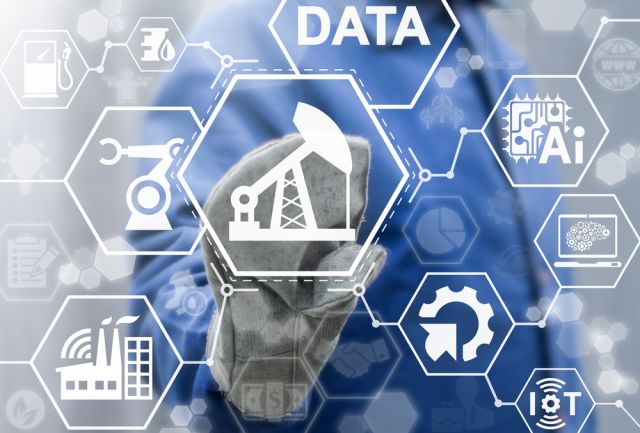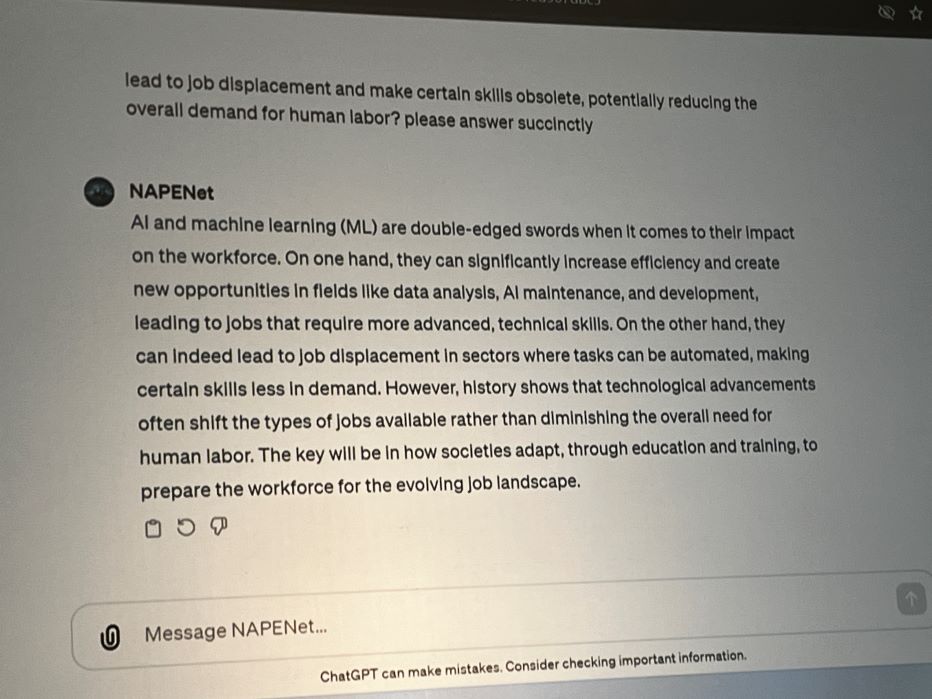
AI also has potential when it comes to analyzing the subsurface, although quantifying the value of that can be difficult, said Lisa Helper, an A&D geologist for Hilcorp Energy. (Source: Shutterstock)
Information overload in the oil patch? Call AI.
Artificial intelligence and machine learning (ML) have been a presence in oil and gas operations for decades, helping model reservoirs and running simulations. With the tech steadily advancing, AI is raising two intertwined questions: What’s next? And is it accurate?
Technology such as large language models (LLMs) powering generative AI (genAI) capabilities have prompted industry players to ponder how best to deploy the technology to make their jobs easier, faster and more accurate.
The opportunities are there: AI can help analyze the subsurface. But challenges exist around data quality, human trust— and fears of AI’s implicit threat to employment, speakers said in a panel about tapping into the power of AI during NAPE’s Energy Business Conference on Feb. 7.
Opportunities
Lisa Helper, an A&D geologist for Hilcorp Energy, said she has seen ML make things easier, faster and drive value. For instance, identifying wells where plungers may fail—leaving the well to sit unproductively—can save a lot of missed production, she said.
ML algorithms can predict plunger failure by processing flow rates, casing pressure, tubing pressure and static pressure to determine when a cycle is off.
“A lot of times it would take about seven days before an operator would notice that that has gone offline, and in many cases across our assets, you're saving about a half [of a] Bcf of production by being able to predict these failures before they go offline and sit idle for multiple days,” she said.

AI can also be useful in small ways to “make your day so much easier,” she said.
Helper recalled her earlier days as a geologist when completing a task such as gridding a map meant a day’s worth of work.
“I kind of laugh about some of the complaints that some of our younger geologists have relative to gridding and how long it takes them to grid a specific area,” she said. “They're complaining about 30 minutes, and now something like the products that NuTech (Energy) are putting out there are taking a matter of minutes.”
AI also has potential when it comes to analyzing the subsurface, although quantifying the value of that can be difficult, she said.
The possibilities are exciting because software can interpret large seismic volumes — perhaps up to 700 sq miles — when quick decisions are needed.
“The next stage I think for this type of fast interpretation is, you could potentially have one of these seismic volumes interpreted by generative AI or machine learning techniques and be able to look at a 10-square-mile field already interpreted very quickly,” she said.
Hilcorp has already tested such capabilities in the field. An employee tasked with the job person interpreted faults in about six months. The machine completed the task in 3 hours.
“Obviously there's a lot of QCing (quality control checking) that needs to be done with that,” she said. “That drives that question of what is the true value of this technology? Managers are constantly thinking, I have three geologists and six interpretations, why do I need a seventh? But … it could potentially benefit the number of geologists that you have to have on a team because you can make quick decisions for more exploitation-type work.”
Companion for complexity
Pushpesh Sharma, senior product manager at AspenTech, sees AI as a companion for tackling complexity.
“As we start getting more complex in our workflows, start getting more complex with our data sets, AI is going to be a very crucial component and going to be a very good companion for our productivity, efficiencies,” he said.

That’s particularly relevant considering the intricacies involved in oil and gas analysis, which involves a laundry list of data and metadata on drilling data, completions, production and geological information that also comes with a bit of uncertainty. And, the data frequency can vary, he said. Humans analyzing the data also bring their own confirmation and frequency biases to the activity, he said.
“If you already agree with some point, you'll try to find the data or you'll look for the trends in data that will kind of confirm what you're already thinking,” Sharma said.
AI can help cut through all that complexity, he said. LLMs, in particular, can help people tackle information overload and help with different tasks, he said.
“Large language models, in my opinion, will help us … tackle this information overload problem that we have,” he said.
LLMs make it possible to scan large databases—such as papers in a journal—to find relevant information, he said.
“You can always have humans go back and deep dive into one of the particular studies that you are more interested in, but it's a very good summarization tool,” Sharma said.
Data quality matters
Galen Dillewyn, vice president for business development at NuTech Energy, said all AI systems need data. That data needs to be consistent, whether it involves land, location, downhole data, seismic lines, production data or any other type of information, he said.
“It all has to be a format that's consistent that the computer can take in, or at least identify the system that it's in so that you can use it,” he said.
He cited the Open Standard Data Universe, which has created a nomenclature to standardize the data.
“I see that being very successful going forward, but it's a starting point. It's not going back, and that's the big thing when we start looking at data. We're looking back more often than we're looking forward,” Dillewyn said.
Looking back poses large challenges because industry data has been collected for more than a century in a variety of formats, some of it handwritten or archived on microfiche, he said.
“There's also generational changes in technology. If you're looking at things like resistivity curves from logs and you look at a 1950 Schlumberger log, it is not the same calculation as a 2010 Baker (Hughes) log,” he said.
Quality can be a barrier to the uptake of AI technology, he said.
Bad data can lead to poor implementation, 4cast Inc. COO Andrew Muñoz said.
“We see the machine learning models or AI models that get brought into the gas companies. They get poorly implemented on bad data,” he said.
Over the years, he’s seen companies dole out money, and bring in experts to put together a program, but it doesn’t go the distance. The reason: not enough data to train the model or deliver the desired, accurate results.
Or, he said, it might be implemented but fails because “there's nobody left to maintain it.”
The double-edged sword
Given the potential for AI to optimize workflows, people tend to worry about job security.
Muñoz programmed a ChatGPT bot named NAPENet to serve as a “panelist” and answer questions during the session. When asked about the potential impact of AI on the workforce, it cited the double-edged sword of increased efficiency and new opportunities — and the displacement of workers whose tasks can be automated.

Sharma said, “AI won't replace you, but somebody using AI will replace you. So that's the reality of it.”
Dillewyn compared the difference between no-AI and AI to the difference of horses and cars.
“Will it make us more efficient? … People using AI will “be leaps and bounds ahead” of those who aren’t and “will replace humans down the road to a degree.”
Helper cautioned that AI can’t yet replace a properly trained and experienced workforce that understands industry fundamentals.
“It's just going to be really critical going forward that we continue to train our workforce … so that when the computer tells us something's there, we know better than to just accept it,” she said.
Recommended Reading
E&P Earnings Season Proves Up Stronger Efficiencies, Profits
2024-04-04 - The 2024 outlook for E&Ps largely surprises to the upside with conservative budgets and steady volumes.
CEO: Coterra ‘Deeply Curious’ on M&A Amid E&P Consolidation Wave
2024-02-26 - Coterra Energy has yet to get in on the large-scale M&A wave sweeping across the Lower 48—but CEO Tom Jorden said Coterra is keeping an eye on acquisition opportunities.
The One Where EOG’s Stock Tanked
2024-02-23 - A rare earnings miss pushed the wildcatter’s stock down as much as 6%, while larger and smaller peers’ share prices were mostly unchanged. One analyst asked if EOG is like Narcissus.
Oil and Gas Chain Reaction: E&P M&A Begets OFS Consolidation
2024-04-26 - Record-breaking E&P consolidation is rippling into oilfield services, with much more M&A on the way.
Matador Resources Announces Quarterly Cash Dividend
2024-04-18 - Matador Resources’ dividend is payable on June 7 to shareholders of record by May 17.






